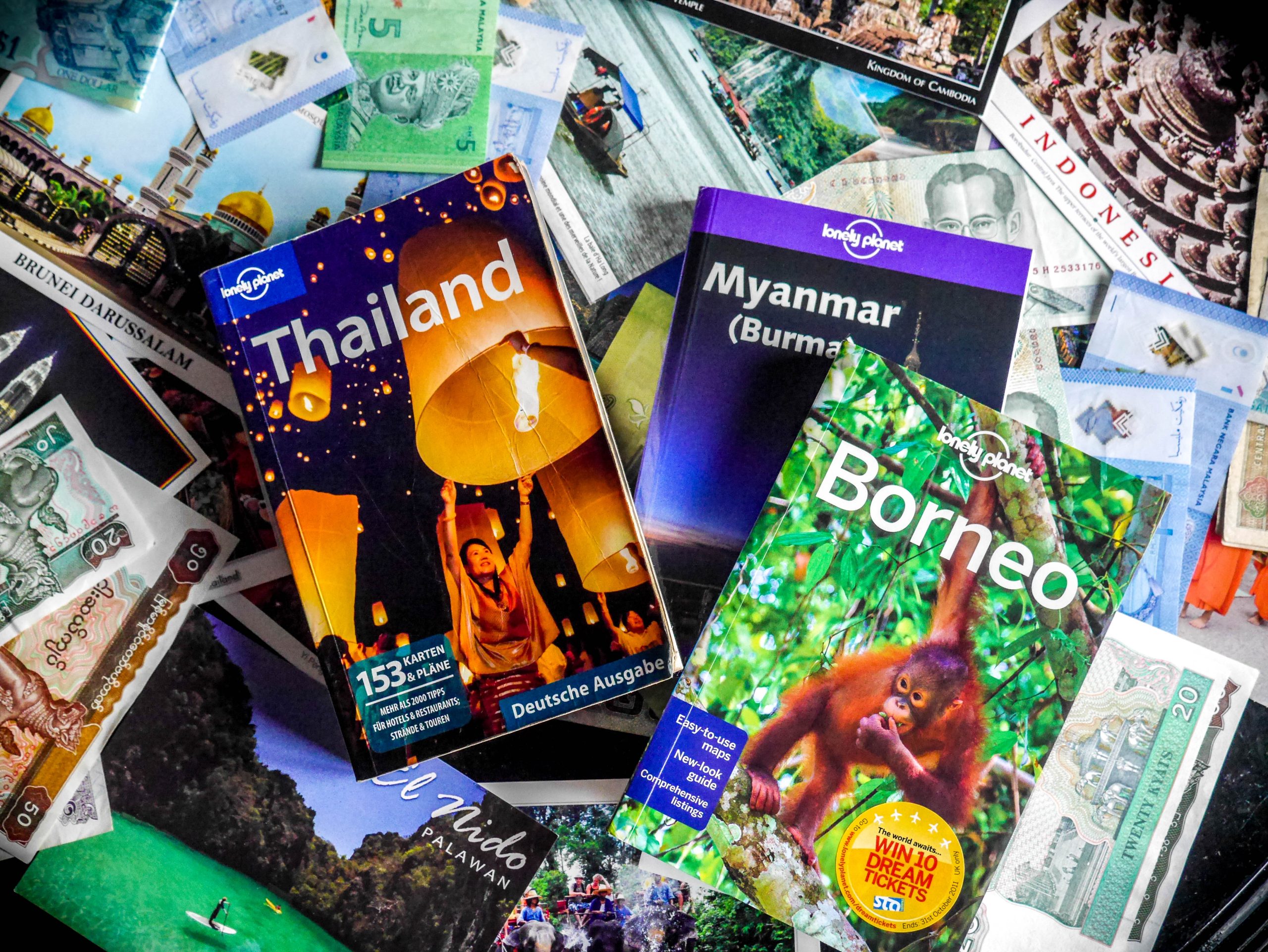What’s the Jellyfish Lake in Palau? How to get there? How much it cost and what to do? This guide will help you get around the Jellyfish Lake.
I would have never imagined I could be swimming around jellyfish, but there I was, on a boat on my way to the Ongeim’l Tketau lake, Palauan for the Jellyfish lake. Located at the archipelago of Palau, this unusual marine lake is the only one in the world, where visitors can a swim around millions of jellyfish. There is absolutely nothing risky about this, as this rare species of beautiful golden jellyfish (Mastigias papua etpisoni) are completely harmless and bumping into them simply feels like being touched by a soft balloon filled with water.
What Makes the Jellyfish Lake Special?
Jellyfish Lake, or Ongeim’l Tketau, is famous for its golden jellyfish, which have evolved to lose most of their stinging ability due to the lack of predators in the lake. The lake is one of the few marine lakes where jellyfish have thrived in isolation for thousands of years, and it’s one of the only places in the world where you can swim among these harmless creatures. This unique evolutionary journey makes Jellyfish Lake an important biological and ecological hotspot, giving visitors a glimpse into nature’s incredible adaptability.
The lake is also deeply connected to Palau’s ecosystem, contributing to the delicate balance of life in the Rock Islands. Golden jellyfish follow a daily migration pattern, moving across the lake as they chase the sun. This migration supports the lake’s health and reflects the intricate relationship between the creatures and their environment.
Jellyfish Lake in a Nutshell:
- Location: Rock Islands, Palau
- Best time to visit: December to April (dry season)
- Entry fee: $100 Rock Island permit, valid for 10 days
- Unique feature: Swim with millions of harmless golden jellyfish
- Temperature: Expect temperatures between 27°C-32°C (80°F-90°F) year-round
Be connected at all times in Palau.
I got a e-SIM with Airalo and bought a plan of 10 GB for my whole stay in the country.
A natural environment like anywhere else
“Please, don’t use any sunscreen”, said Matt, one of the tour guides and diving instructor for Sam´s Tours. “Any creams, dirt or elements we take into the water could affect the ecosystem where the jellyfish live”, he added.
Once at the entrance to the lake, security was cautious too. There was a long list of rules at the checkpoint and we had to wash again our bodies with fresh water while our permits were controlled.
Swimming in the Jellyfish Lake is not a cheap activity. Each foreigner has to purchase a US$100 permit that allows him to visit the lake for a period of 10 days. At the same time, Palau is also an expensive country for tourism and is common to pay between US$100-250 for a tour to the lake. Nevertheless, this is not the destination that attracts a luxurious and posh clientele like Bora Bora or Fiji. Palau is a very isolated island in the middle of nowhere, where nature blooms like in any other place in the world and most visitors are adventure and marine lovers, who know about the extraordinary beauty in the country.
Once at the shore of the Jellyfish lake, three other tourists, two tour guides and I were the only people around. From the outside, the lake, not larger than a football pitch, looks like any other lagoon: water was dark blue and there was not much sign of marine life – I was really not sure what to expect.
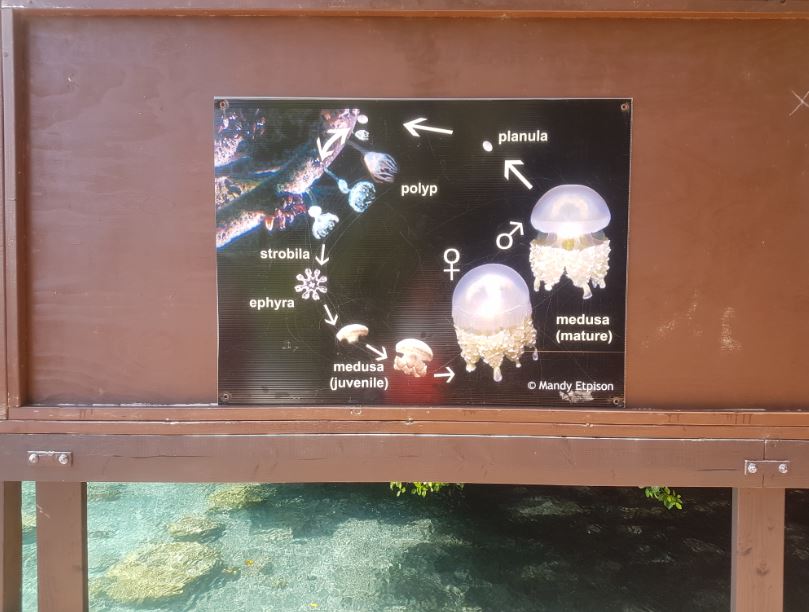
How to Travel to Jellyfish Lake: A Complete Guide
Getting to Jellyfish Lake is an adventure in itself, as it’s located in the remote Rock Islands of Palau. Here’s how to reach this mesmerizing destination:
1. Fly to Palau
First, book a flight to Koror International Airport (ROR), Palau’s main gateway. Flights to Palau are available from several Asian cities, including Manila, Seoul, and Taipei. This is one of the most remote countries in the world. It is too far away from other islands to add it on a Pacific trip, but if you are in Taiwan or Korea, you can get a good discount.
- Airlines like United Airlines, Asiana Airlines, and China Airlines offer regular routes. I went there through Taipei while doing an East Asia Tour. I got tickets for around $400 return.
- Booking tip: Use flight comparison websites like Google Flights to find the best fares.
2. Stay in Koror
Once you arrive in Palau, it’s a short 15-minute taxi or shuttle ride to Koror, the largest city in Palau where most hotels and tour operators are based. This is the key spot for those who travel to Palau. It is a small town with a cute city center and a few resorts.
Accomodation in Palau is unfortunately a bit expensive, but if you stay in a simple guesthouse, you can find good deals.
3. Book a Tour to Jellyfish Lake
Independent visits to Jellyfish Lake are not allowed; you need to book through a local tour operator.
- Sam’s Tours Palau and Palau Dive Adventures are popular operators offering daily trips. I went with Sam’s Tours and I loved them. They are not only the best company in the country, but they also collaborate with videographers and enviromentalists from National Geographic to protect the area.
- Tours typically start from $100 USD, including boat transfers, snorkeling gear, and guides.
4. Get your Permits for the Jellyfish lake
You will need a Rock Island permit ($100 USD), which covers your entry to Jellyfish Lake and other Rock Island attractions. The permit is valid for 10 days, allowing you to explore other nearby islands. This permit is directly issued by the tour operator and my personal recommendation is to combine your Jellyfish Lake visit with visits to the Rock Islands, a snorkelling tour, the mud bad and the kayaking tours.
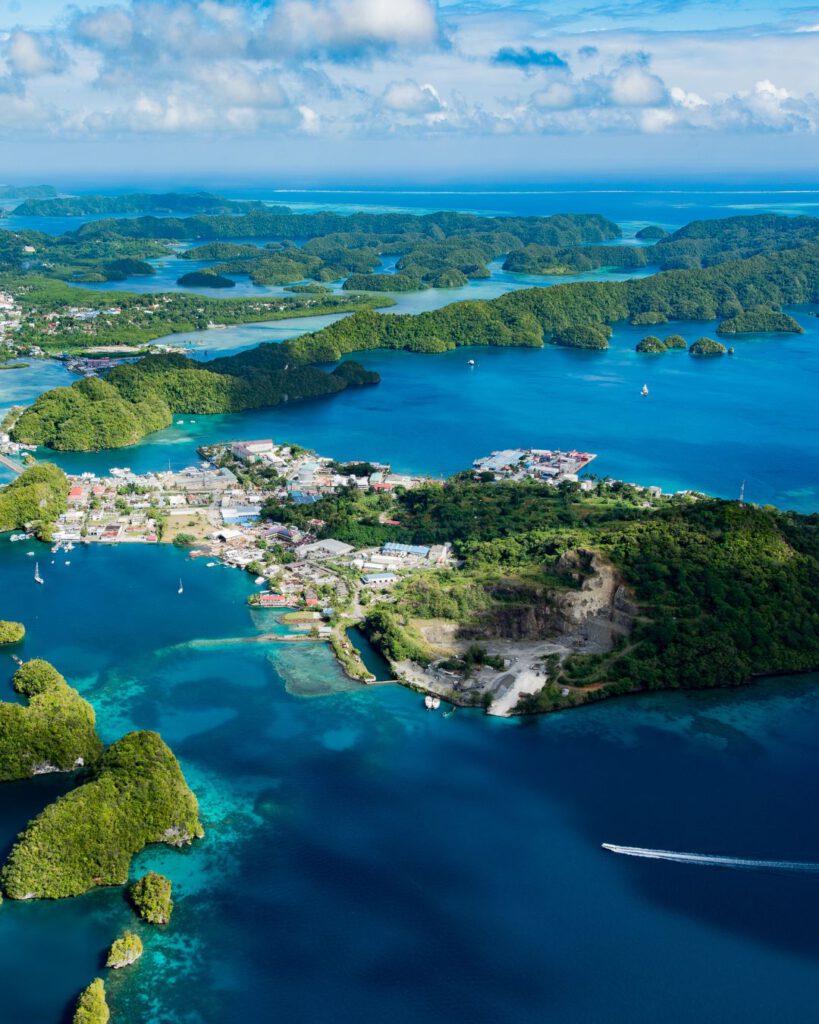
Best Time to Visit Jellyfish Lake: Avoid Crowds and Enjoy Nature
The dry season from December to April is the best time to visit Jellyfish Lake, offering ideal conditions for snorkeling and boat tours. During this time, Palau experiences less rainfall, ensuring calm waters and clear skies, perfect for outdoor activities.
If you’re looking to avoid crowds, February and March are great months, as they fall just outside of peak tourist season. The weather is still favorable, but the lake is less crowded, offering a more serene experience.
What to Expect by Season:
- December to April: Dry season with warm temperatures and calm waters; best for snorkeling and swimming.
- May to November: Rainy season with occasional tropical showers; fewer tourists but some activities may be limited due to weather.
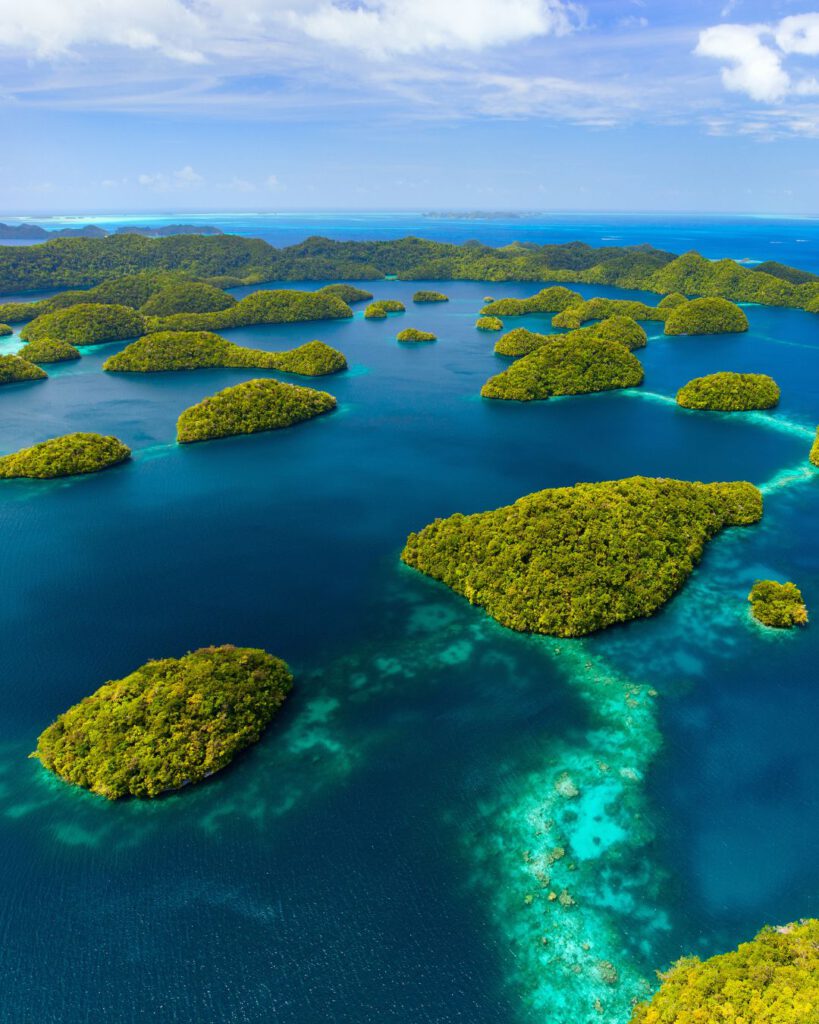
Essential Safety Tips for Swimming with Jellyfish
Swimming with millions of jellyfish may sound intimidating, but Jellyfish Lake’s golden jellyfish are harmless to humans. However, there are still a few important safety precautions to keep in mind:
- No sunscreen: To protect the jellyfish and their delicate ecosystem, wearing sunscreen is prohibited in Jellyfish Lake. Instead, opt for rash guards or other UV-protective clothing to shield yourself from the sun.
- No touching: While the jellyfish in the lake are harmless, it’s important to avoid touching them. This helps preserve their population and prevents any potential harm to the fragile ecosystem.
- Snorkel gear: Bring your own snorkeling gear, including a mask and fins, to fully enjoy the experience. Most tours will provide gear if you don’t have your own.
- Stay hydrated: The climate in Palau can be hot and humid, so make sure to stay hydrated throughout your visit, especially after snorkeling.
Read more: Snorkeling and sea kayaking in Palau’s rock islands
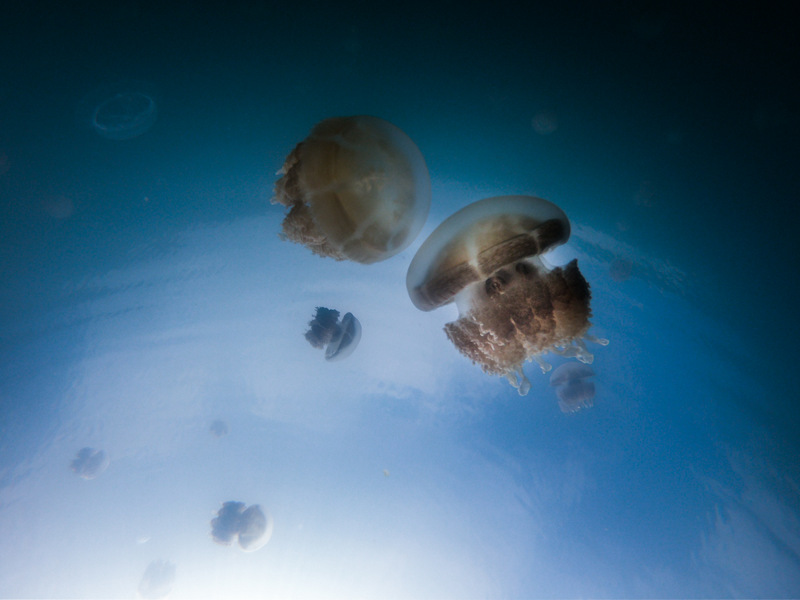
Following jellyfish from east to west
Our Guide Matt recommended us to swim to the other side of the lake and follow the sunlight. Jellyfish are photosensitive species and for that reason, they spend most of their lives migrating from east to west following daylight. Each morning most of the population swim until reaching the shadows on the lake’s far eastern edge. Later, as the sun passes overhead around noon, the jellyfish turn around and head back toward the western edge. Here, they stop at the shadow line – a migration pattern that goes over and over again every single day.
Read more: These are some of the most extreme places to visit around the world
It was 10 am in the morning and the sunlight was reaching only a small section of the lake. This exact time is the best one to eyewitness the incredible amount of jellyfish at the lake. “You will see millions of jellyfish at some point. Simply swim straight in that direction”, said Matt before getting into the water. “They call it the wall of jellyfish and it only happens at this time of the day”.
Although the lake is only 30 m deep, we were also advised not to free dive in it. Going below 15 m can be deadly, as the bottom of the lake contains no light and instead of oxygen, poisonous hydrogen sulfide gas. In between, there is a 2 m pink middle layer, consisting of bacteria. Above that, in clear waters, the golden and moon jellyfish swim – this last one is also a harmless type of jellyfish inhabiting the lake, but way less widespread. Still, I encountered at least 50 of these creatures during my visit in the lake.
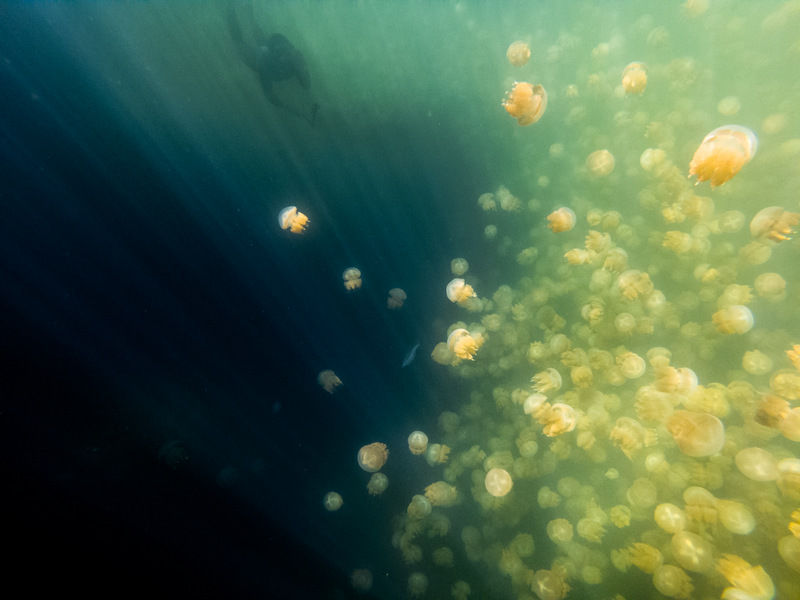
How Much Does It Cost to Visit Jellyfish Lake?
Visiting Jellyfish Lake can be an unforgettable experience, but it’s important to budget accordingly. Here’s a rough breakdown of costs:
- Flights to Palau: Round-trip tickets from major Asian hubs like Seoul or Taipei start at $800-$1,200 USD.
- Accommodation in Koror: Mid-range hotels and guesthouses cost between $80 to $150 USD per night.
- Rock Island Permit: $100 USD, valid for 10 days, granting access to Jellyfish Lake and surrounding islands.
- Tours to Jellyfish Lake: Day trips cost around $100-$150 USD per person, including boat transfers, permits, and snorkeling gear.
For a 3-4 day trip to Palau, including flights, accommodation, and tours, budget around $2,000 to $3,000 USD per person.
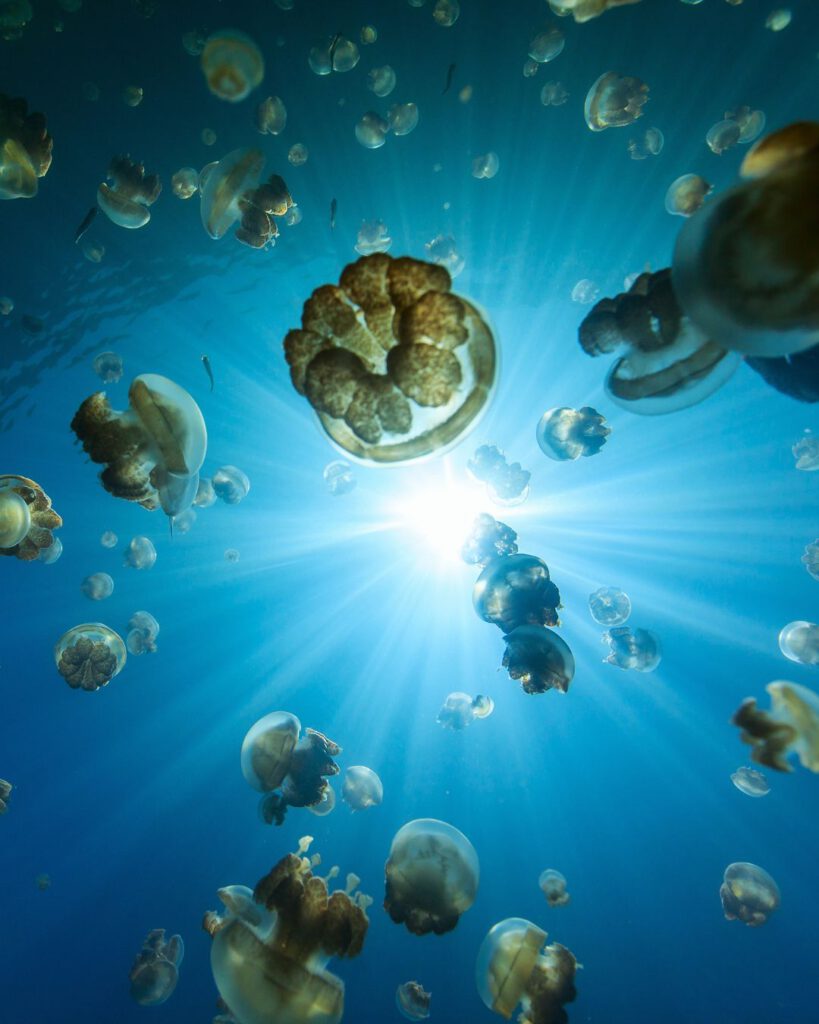
Would I do it again?
Absolutely yes! It’s true that swimming at the Jellyfish Lake sounds scary. I´ve never swam close to a jellyfish on purpose and never thought to swim around millions of these animals. Even though I tried first to avoid touching the jellyfish as a natural instinct, there is a point in which I couldn´t evade them. Hundreds of thousands of jellyfish appeared from one moment to another and touching them with my arms, legs and even cheeks became inevitable. First, I was a little worried about my safety, but after bumping a couple of times with them, I realized they are extremely soft and inoffensive – I even pet a couple of them.
Although many people think that this type of jellyfish don´t have stingers, they do. However, these are too small to be felt by us. Like all 70 marine lakes in Palau, these very particular environments were formed by depressions in limestone thousands of years ago. The jellyfish, as other marine species, were confined in the lakes and had to adapt to the new living conditions. Since the jellyfish here feed from algae and have no natural predators present, their stingers became inoffensive for larger animals like humans.
Read more: Jellyfish Lake Travel Guide
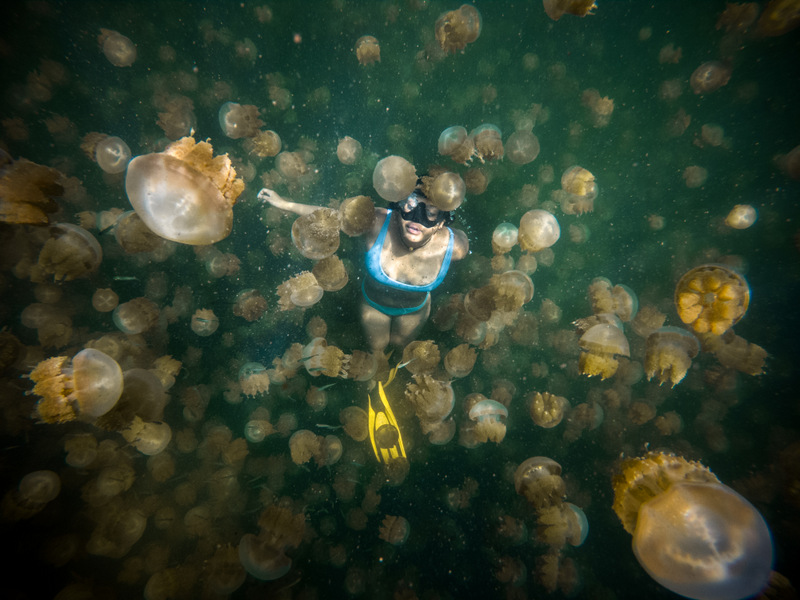
The jellyfish lake reopened for conscious tourism
This natural scene was not like that several months ago. In 2016, Palau suffered from El Niño and a severe drought. The combination of these natural events sunk the population of mature golden jellyfish from 20 million to almost zero. Only around end of 2018 the population of jellyfish recovered and visiting the lake became an option again.
Although the Coral Reef Research Foundation of Palau reached the conclusion that human behavior did not affect the decrease of jellyfish, the government of Palau took very seriously the protection of these rare environments towards tourism. Access to the lake became more limited and prices on the permits increased 100%. All of this in order to avoid mass tourism – measures I´m sure each one of us really appreciate.
Ongeim’l Tketau is not the only jellyfish lake in Palau; there are other five lakes containing jellyfish in the country, but only this one is accessible for tourism.
Read more: The green pledge you have to sign in your passport upon arrival
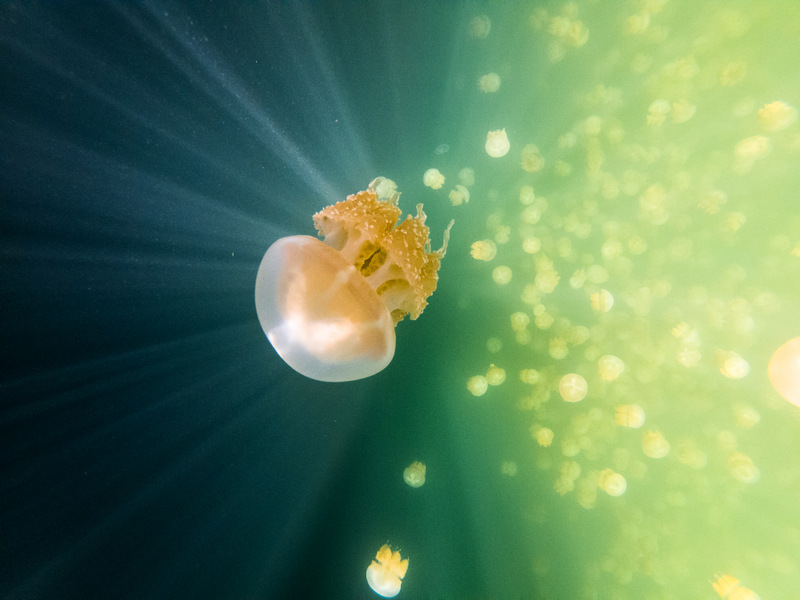
Swimming at the Jellyfish Lake was one of the world most magical underwater experiences I had, and Palau is a destination every traveler should have in their bucket list. The government of Palau, tour operators and environmentalists understand that the lake needs protection but at the same time is Palau´s largest tourism driver. It´s difficult to keep that balance and although I hope this surreal place stays open for a while, it is in our hands as visitors to raise awareness on how we protect unique environments like this one.
Top Things to Do in Palau Beyond Jellyfish Lake
While Jellyfish Lake is a must-see, Palau offers plenty of other attractions for nature lovers and adventurers:
- Rock Island Tours: Explore the stunning limestone islands, secluded beaches, and hidden lagoons.
- Snorkeling and Diving: Palau is famous for its incredible marine biodiversity, including Blue Corner and German Channel, two of the world’s best dive sites.
- Ngardmau Waterfall: Trek through the rainforest to reach this majestic waterfall, one of Palau’s most popular natural attractions.
- Peleliu Island: For history buffs, Peleliu is a significant World War II site with battlefields, memorials, and wreckage.
- Milky Way Lagoon: A hidden lagoon where you can slather yourself in the lagoon’s natural, white mud known for its skin-soothing properties.
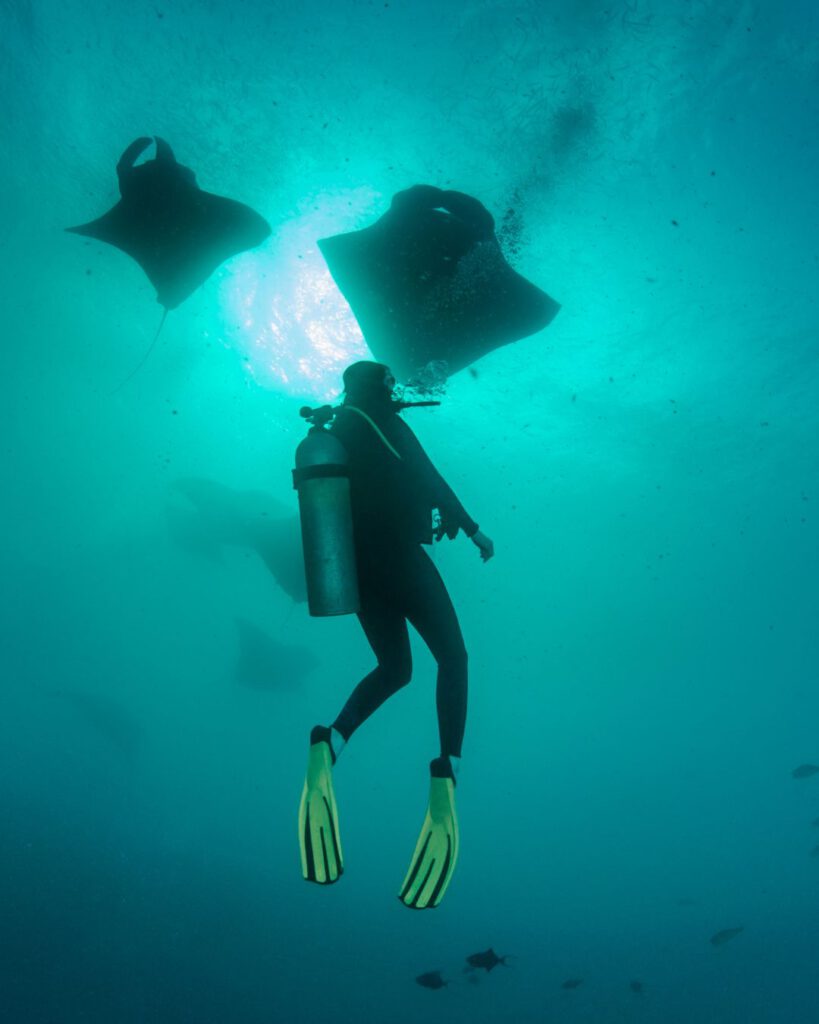
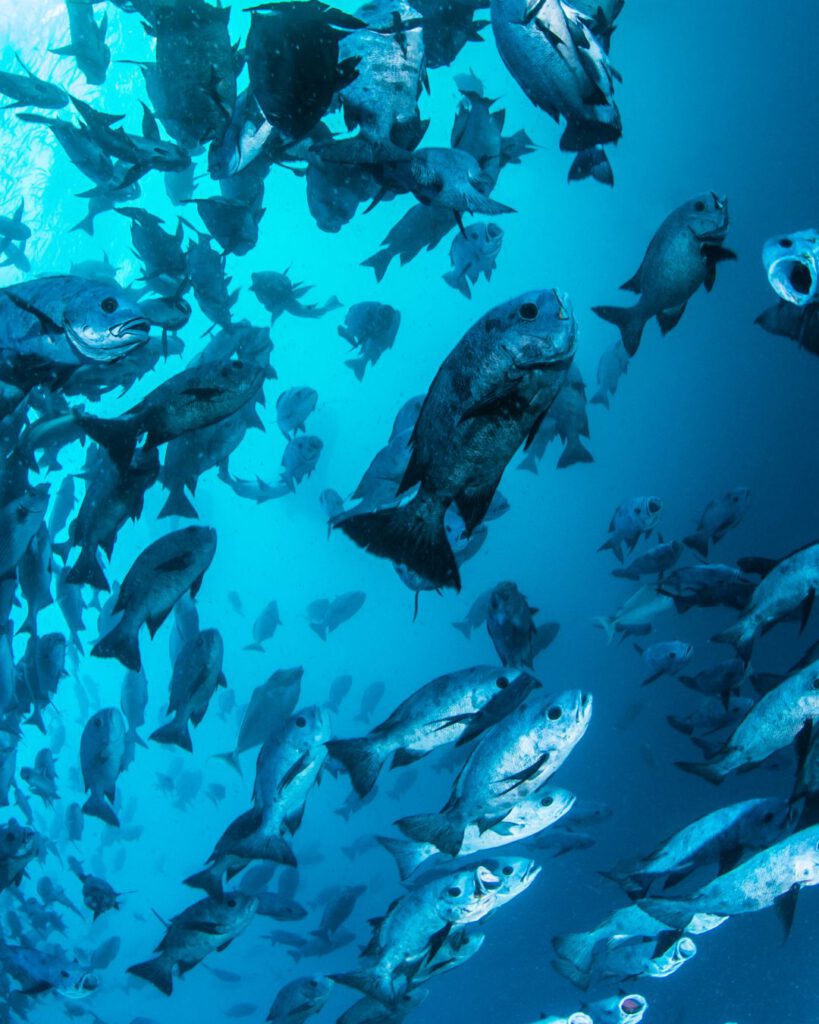
How do I find cheap flights to Palau?
Finding a cheap flight anywhere around the world is not always easy. It’s about comparing platforms, selecting the right routes and booking at the right time. Fortunately, platforms like Skyscanner became known as an all-in-one tool for booking flights at the lowest cost possible.
They analyse every potential company and sub-contractor in order to find the lowest price available for you. Not only that, but you can also select the option “Travel Anywhere” and let Skyscanner find the cheapest place to travel at any selected date.
I check all my flights first at Skyscanner, and in 90% of the cases, I find the best option for me to book.
Also, by booking here using Skyscanner, you will support my blog and help me create more amazing and useful content.





